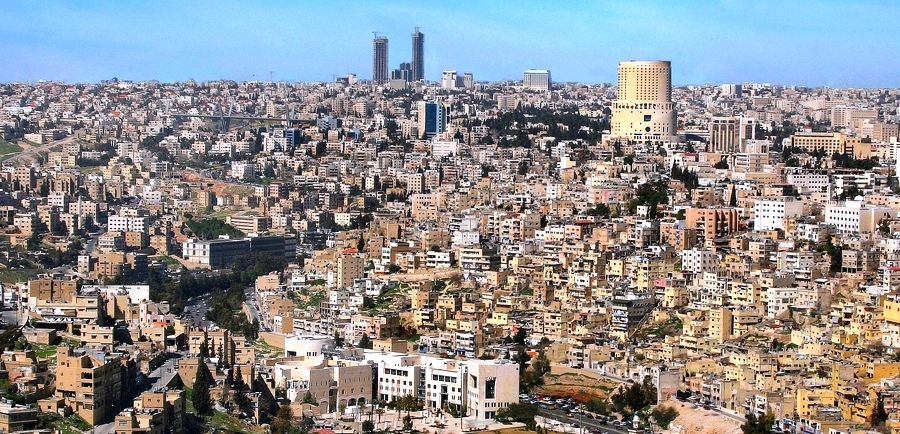In Amman, Jordan, a community-led initiative is renovating and repurposing public spaces to better connect neighborhoods with newly arriving residents. The spaces are being redesigned and promoted as places where social interaction among host communities and refugees is encouraged.
The greater Amman municipality is working in collaboration with the French Agency for Development, the French Red Cross and the Jordanian Red Crescent to reduce socio-cultural tensions and spatial segregation between host and refugee communities living in the the Badr Nazzai district in the south of the city.
The broader project is centered around providing improved access to healthcare and social, employment and cultural opportunities for refugees. Micro-initiatives are also being implemented as part of the project; the rehabilitation of Shura and Jordan parks and the establishment of a football training program for Syrian and Jordanian children demonstrate how social cohesion can be strengthened through the creation of public spaces and programs and that barriers inhibiting social exchange can be dismantled.
Amman is the capital city and the economic, political and cultural centre of Jordan with a population of 4 million people. Situated at the centre of the Middle East region, Jordan has a long history of migration and has provided safe haven to migrants fleeing their home countries and in need of assistance.
Relative to its own population, Jordan stands as the second largest refugee-hosting country in the world, with refugees representing more than 30 percent of the total population. Despite this, Jordan has not signed the 1951 UNHCR Refugee Convention and does not have legislation that regulates the status of refugees.
Approximately 30 percent of Amman’s 4 million inhabitants report as foreign-born and the influx of migrants has significantly increased since 2013, with the mass arrival of Syrian refugees. In 2016, more than 435,000 Syrians were reported as residing in Amman, however, despite this increase, the city has responded effectively to meeting the needs of both new and settled communities.
Throughout the city, essential municipal services are provided to people regardless of their country of origin or nationality. Nevertheless, for a number of districts in Amman, the growth of refugee communities has caused increased pressure on municipal infrastructure and public services, particularly regarding education, transport, public spaces, waste management, and the provision of energy and water.
The project in Badr Nazzal follows a social cohesion approach and the objective are:
- strengthen the resilience of vulnerable populations;
- improve living conditions;
- expand social communication between refugees and the local community;
- establish community-based activities and capacity building opportunities.
The case study was developed in the framework of the Mediterranean City-to-City Migration Project (MC2CM), a project coordinated by ICMPD and funded by the European Union and the Swiss Agency for Development and Cooperation. The MC2CM project has been working since 2015 with Amman, Beirut, Lisbon, Lyon, Madrid, Tangiers, Tunis, Turin and Vienna to increase the knowledge base on urban migration.
Additionally the project has sought to nurture a peer-to-peer dialogue and mutual learning on specific urban challenges such as social cohesion, intercultural dialogue, employment and provision of basic services for migrants, among others. This case study was selected by the Municipality of Madrid in order to showcase a practice that contributes to social inclusion of migrants at the local level.
Featured photo of Badr Nazzai copyright © UCLG Learning,

